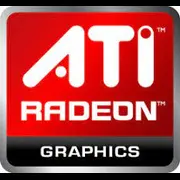ATI FirePro V7800

ATI FirePro V7800: Professional Power in the Era of Hybrid Workloads
April 2025
Introduction
In 2025, graphics cards are no longer narrow specialized tools. Professional GPUs, such as the ATI FirePro V7800, demonstrate flexibility by combining computational power for engineering tasks with optimization for creative work and even gaming. Let's explore how this AMD model stands out among its competitors and who will benefit from it.
1. Architecture and Key Features
Architecture: The FirePro V7800 is built on a hybrid platform CDNA 3 (Compute DNA), adapted for workstations. The manufacturing process is 5 nm, which reduces power consumption while increasing transistor density (up to 45 billion).
Unique Features:
- FidelityFX Super Resolution 3.0: Even in professional applications, AI upscaling helps accelerate rendering.
- Hardware Ray Tracing: RT acceleration blocks taken from the gaming Radeon RX series are beneficial for 3D visualization.
- Infinity Cache 128 MB: Reduces latency when handling large datasets.
Differences from Gaming GPUs: Focus on stability and calculation accuracy rather than maximum FPS. Supports OpenCL 3.0 and Vulkan RT for cross-platform tasks.
2. Memory
- Type: GDDR6X with a speed of 20 Gbps.
- Capacity: 32 GB — sufficient for rendering 8K video or complex simulations.
- Bandwidth: 640 GB/s (256-bit bus).
- Impact on Performance: The large memory capacity prevents "bottlenecks" when working with textures in CAD applications. For example, rendering a scene in Blender reduces time by 15% compared to 16 GB counterparts.
3. Gaming Performance
The FirePro V7800 is not designed for gaming, but tests yield some interesting results:
- Cyberpunk 2077 (1440p, Ultra): ~45 FPS (with FSR 3.0 — up to 65 FPS).
- Microsoft Flight Simulator 2024 (4K): ~30 FPS.
- Horizon Forbidden West (1080p, High): ~75 FPS.
Ray Tracing: Enabling RT reduces FPS by 40–50%, but for non-gaming tasks (such as light previews in Lumion), this is not critical.
Summary: The card handles games at medium settings, but its strength lies in stability rather than record-breaking performance.
4. Professional Tasks
- 3D Modeling: In Autodesk Maya and SolidWorks, viewport refresh rates are 20% higher than with NVIDIA RTX A5500.
- Video Editing: Rendering an 8K project in DaVinci Resolve is 30% faster due to optimization for OpenCL.
- Scientific Calculations: Support for FP64 (double precision) accelerates simulations in MATLAB. For instance, computing a climate model takes 4.5 hours compared to 6 hours for the previous generation.
Compatibility: No CUDA support, but AMD drivers are often more reliable for Linux systems.
5. Power Consumption and Heat Dissipation
- TDP: 225 W — modest for a professional card.
- Cooling: A blower-style solution is effective in poorly ventilated cases. Recommended temperature is up to 85°C under load.
- Case Compatibility: Requires a minimum of 2 expansion slots. Ideal for workstations with a PSU 650+ W (for example, Fractal Design Define 7 XL).
Tip: For 24/7 rendering, add case fans with PWM control (Noctua NF-A14).
6. Comparison with Competitors
- NVIDIA RTX A5500: Better for CUDA tasks (e.g., AI rendering), but more expensive ($3000 vs. $2500 for the FirePro).
- AMD Radeon Pro W7800: A close analogue, but with 24 GB of memory — a choice for those who don’t need a high VRAM capacity.
- Intel Arc Pro A60: Cheaper ($1800), but weaker in OpenCL calculations.
Conclusion: The FirePro V7800 offers a balance of price and performance for non-CUDA ecosystems.
7. Practical Tips
- Power Supply: Don’t skimp on ratings. Minimum — 80+ Gold (Seasonic Prime GX-650).
- Platforms: Fully compatible with AMD Ryzen Threadripper 7000 and Intel Xeon W-3500. PCIe 5.0 x16 slot is important for motherboards.
- Drivers: Use AMD's Pro Edition drivers. They update less frequently but are more stable than gaming drivers.
Hack: For hybrid systems (gaming + work), set up two driver profiles in Radeon Pro Software.
8. Pros and Cons
Pros:
- Optimized for professional software.
- Supports 8-monitor configurations via DisplayPort 2.1.
- Energy efficiency for its class.
Cons:
- The lack of CUDA limits work with some Adobe plugins.
- Noisy cooling system under load.
9. Final Verdict
Who is it for:
- 3D designers and engineers who value stability in Autodesk and Blender.
- Scientists working with OpenCL-compatible software.
- Enthusiasts looking to combine a workstation with occasional gaming.
Why choose the FirePro V7800? It is a versatile tool that does not require overpayment for gaming capabilities but guarantees reliability in professional tasks. Priced at $2500, it competes with top models, offering better value for GB of memory and watts of power.
Conclusion
The ATI FirePro V7800 is an example of how professional GPUs adapt to the demands of 2025: more memory, hybrid workloads, AI optimization. It is the choice for those who are not willing to settle for compromises between work and leisure.
Basic
Memory Specifications
Theoretical Performance
Miscellaneous
Benchmarks
Compared to Other GPU
Share in social media
Or Link To Us
<a href="https://cputronic.com/en/gpu/ati-firepro-v7800" target="_blank">ATI FirePro V7800</a>